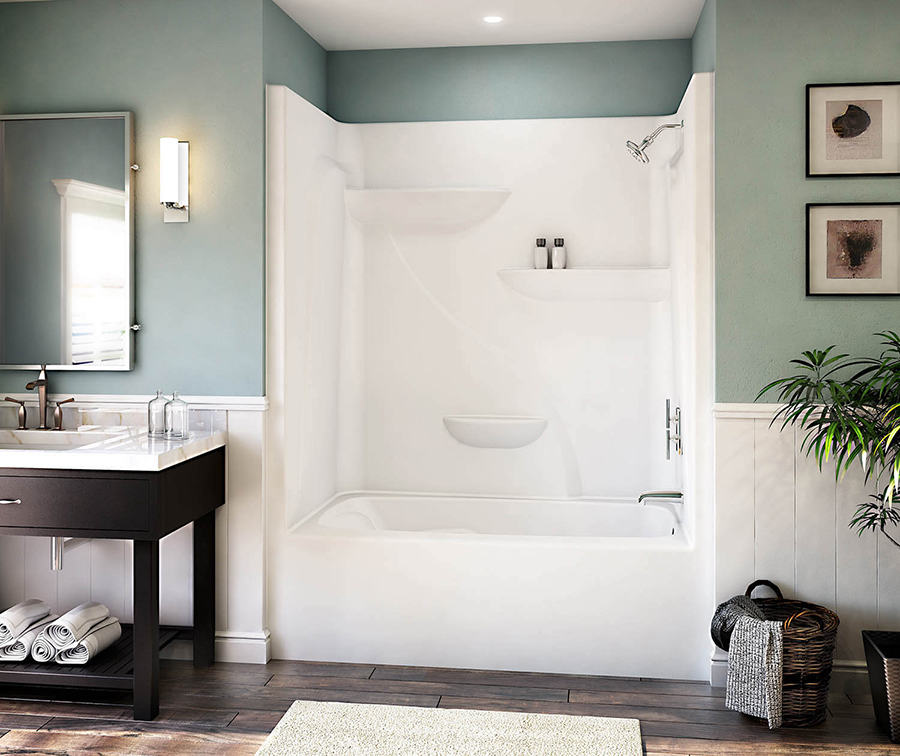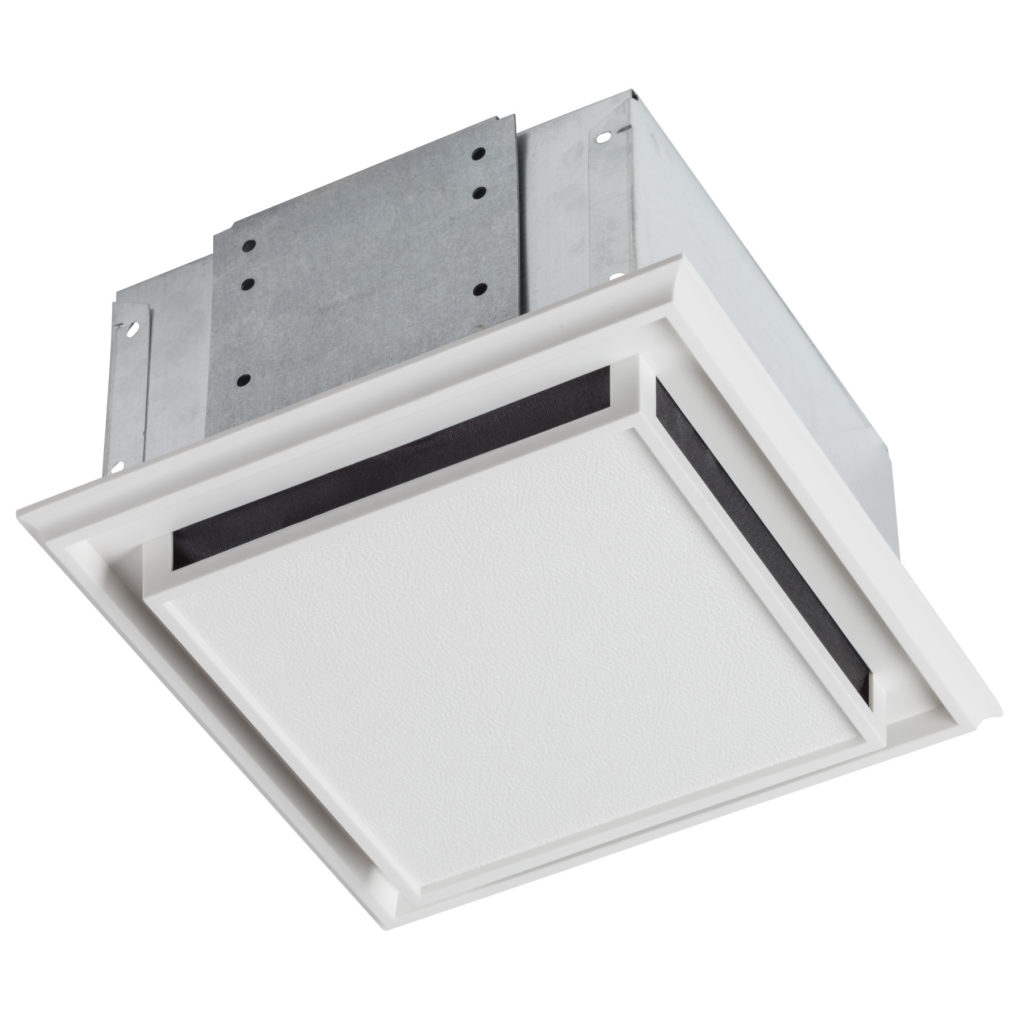There are multiple different types of pipes when you are dealing with plumbing. But, which one of these options will be the best for your project? This article will cover several different types of pipes, their purposes, and what they are best used for.
What is DWV pipe?
The abbreviation: DWV stands for Drain, Waste, and Vent. Although this pipe is made of the same material as PVC pipe and looks very similar, it has thinner sidewalls when compared to neighboring PVC products.
Uses: DWV (Drain, Waste, and Vent) pipe has thinner sidewalls because it is not made to hold pressure. It is made for drains, waste pipes, and vents. Because these purposes should never see significant pressure, the line should never be in danger of bursting, which means they can utilize the thinner sidewalls, resulting in a less expensive product.
DWV pipe is designed to be installed in a fashion that will allow gravity to facilitate its contents movements. Or in other words, it is meant to be used for drains, sewage lines, and plumbing vents.
How to identify it: DWV pipe is the same white color as its PVC counterpart, so it’s not always as easy to identify. The major difference is that the sidewall thickness will be noticeably thinner than schedule 40 or schedule 80 pipe.
When using fittings, the pipe will slip into the fitting. The part is called a Hub, shorter than its schedule 40 counterparts. Also, there will typically be a label on the pipe that states NOT FOR PRESSURE. This will help ensure that you know this pipe is not to be used for pressurized lines.
What is PVC pipe?
The abbreviation: PVC is a Polyvinyl Chloride, a manufactured plastic with additives to help prevent oxidation and degradation from affecting it.
Common Uses: PVC is used in many different applications, the most common of which is residential plumbing. Once it was introduced in the 1950s as an alternative to steel and cast-iron pipe, it took over the plumbing industry. It can also commonly be found housing underground electrical wires, HVAC venting, irrigation piping, and much more.
How can you identify it: PVC piping is most easily recognizable by its white or dark grey coloration. It will have its technical specifications printed down its side and may be found with plain ends or bell ends.
A bell end is an end that will allow you to connect the plain end of another piece of pipe to it. It is like a coupling that is pre-formed into the pipe. PVC is available in 10 or 20feet sections but is sometimes sold as furniture PVC, which may be sold as 5 foot sections.
What is a CPVC pipe?
Abbreviation: CPVC stands for Chlorinated Polyvinyl Chloride. It is created when PVC resin is chlorinated, which results in a more durable and degradation-resistant piping. PVC and CPVC are both thermoplastics.
Typical uses: CPVC is commonly recognized as the preferred choice for residential hot water lines. PVC is limited to 140 degrees superheat, while CPVC has a peak recommended temperature of 200 degrees. Therefore, it is common to see PVC run for the cold-water lines of homes, while CPVC is the popular choice for hot water lines within the home.
How can you identify it: CPVC looks remarkably like PVC but has a more yellowish exterior. It can be found in a light grey color as well. Like PVC, it will have the technical information printed on its side, be sold in 10, 20, or sometimes 5 feet sections, and come in bell and plain end forms.
Another way to identify CPVC is that the yellowish-colored pipe most used for hot water supply lines will be sized in copper sizes. Or in other words, the pipe’s sizing will be based on the exterior size of the tube, not the interior, such as PVC. This means that yellow CPVC pipe will always be smaller than its white PVC counterpart when comparing the same “size” piping.
What is ABS piping?
Abbreviation: ABS stands for Acrylonitrile-Butadiene-Styrene (ABS). It is a thermoplastic that has been used since the 1960s. It has proven to be exceptionally durable, which has made it a strong candidate for drainpipes that are in the ground and need to be more resilient.
Typical uses: ABS is typically used outside in underground situations. This is because of its strength and its extreme resistance to cold. While other piping options can become brittle in the colder weather, ABS is not affected in the same manner.
ABS pipe has been banned in certain areas due to potential failures caused by its production. The manufacturing process is a recycling process to keep the cost-competitive with PVC. This has led to instances where the pipe has failed and has caused certain regions to deem the usage of ABS piping illegal.
ABS resin is not an insulating compound, which means that ABS pipe does nothing to keep water at a preferred temperature or muffle the sound of water going through it. Both are accomplished with PVC and CPVC products. Another reason ABS is not preferred to be used within the home.
How can you identify it: The easiest way to tell if you are dealing with ABS pipe is the color? ABS IS ONLY BLACK, unlike PVC and CPVC, which have different colorations. Beyond the coloring, it bears a striking resemblance to PVC, but it is the only pipe that is black.
Comparison Table
| DMV Pipe | Schedule 40 PVC | Schedule 80 PVC | CPVC | |
| Color | White | White | Dark Gray | Light Yellowish |
| Maximum Pressure | 0 psi | 130psi-600psi Depending on the pipe diameter | 220psi-850psi depending on pipe diameter | 120psi-780psi depending on pipe diameter |
| Maximum Temperature | 140 degrees | 140 degrees | 140 degrees | 180 degrees |
| Minimum Temperature | 20 degrees | 20 degrees | 20 degrees | 0 degrees |
* Psi changes as the temperature and size of the pipe change.
Common Questions:
What is the difference between schedule 80 and schedule 40 PVC pipe?
The main difference between schedule 40 and schedule 80 pipe is that schedule 40 is thinner, meaning it will be used on lower water pressure systems. Schedule 40 is the most common thickness of piping that you will find in residential plumbing. Since schedule 80 pipe is thicker, it will be used for higher pressure systems.
These two styles of pipe are also the same exterior diameter. The inside is smaller due to the thickness of the walls on the schedule 80 pipe.
Also, you will typically see that schedule 80 pipe is a grey color while schedule 40 pipe is a white color. This is to help you distinguish them apart from each other immediately and prevent costly errors.
What is the difference between DWV and PVC pipes?
DWV can easily be mistaken for PVC because they look remarkably similar. However, there is a big difference. DWV is not able to be used with pressure. It is strictly to be used for draining and venting purposes.
The joints or “Hubs” are not as deep, and the pipe will typically be thinner. Because this pipe is not made for pressure, it can leave the manufacturer without being pressure tested.
Without the added cost of pressure testing and the less material required to make a thinner pipe wall, it allows DWV pipe is cheaper than its PVC counterpart.
Can PVC be used for sewer piping?
Yes, PVC can be used for sewer piping.
ABS was the go-to product for sewer piping. Still, a change in the manufacturing process resulted in a higher chance of failure, which allowed PVC to take the lead as the most popular sewer piping product currently on the market.
What is the expected lifespan of PVC pipes?
The life expectancy of PVC pipes is extraordinary. When PVC pipe is buried underground, there is no chemical degradation expected. This gives PVC a very long-life span. Studies have proven that pressurized PVC water lines buried in the ground could feasibly last well over a hundred years, if not much longer.
Are PVC pipes safe for drinking water?
PVC pipes have been proven to be very safe for drinking water to pass through. Scientists will examine the essential aspects of how water reacts with the piping: migration, microbial growth, odor, and flavor.
Migration: PVC pipe has been proven by many European research labs to have excellent resistance to migration. Migration is when chemicals are leeched from the pipe into the water or vice versa.
Microbial growth: PVC is excellent at preventing migration, which means that it is also very resistant to microbial growth.
Odor and Flavor: Regular testing has found that the risk of abnormal smells or flavors is extremely low due to the lack of migration and microbial growth.
What are the advantages of using PVC over other piping options?
Lightweight: PVC products are very lightweight. Therefore, they will require less strapping once installed and make installation much more manageable.
Joining methods: PVC has multiple binding methods, from solvent to push-lock fittings. The installer will have numerous options to best suit their needs.
Retrofitting: Since PVC is a thermoplastic product, retrofitting or repairing the PVC is quite simple. Since PVC can be easily manipulated, you can add saddle taps, connect new lines, or reroute the piping with minimal effort.





It’s so true that because it is designed for drains, waste pipes, and vents rather than holding pressure, DWV (Drain, Waste, and Vent) pipe has thinner sidewalls. I had no idea though that they may use the thinner sidewalls and produce a less expensive product since the line shouldn’t ever be at risk of bursting because these purposes shouldn’t ever experience substantial pressure. Let me send this to my dad who needs a Glass DWV Pipe for their plumbing fixture on the farm since it seems like the most viable one for the project.
Some confusion with substituting DWV pipe with Schedule 40. I’ve read DWV is not code for radon venting but Schedule 40 is. Can you comment please?
I haven’t seen anything in the code that says you can’t use schedule 20, but the EPA’s Building Radon Out guide specifically states “Do not use a pipe thinner than Schedule 40.” I think when dealing with the health and safety of the occupants, it’s not worth gambling with a thinner and more brittle pipe.
The easiest way to identify DWV fittings of any type of material, whether it be it copper, PVC or ABS is the “sweep” built into the fittings themselves, as well as the shorter “shoulders”. Additionally, Wyes and Tee-Wyes are not available in schedule 40 or 80 fittings, nor are Desancos, Estabrooks or Clean-Outs of any kind, (End or Dandy) They are all part of the sanitary drainage system, and as the term DWV implies, designed specifically to be used as any part of a Drain, Waste and/or Vent system.